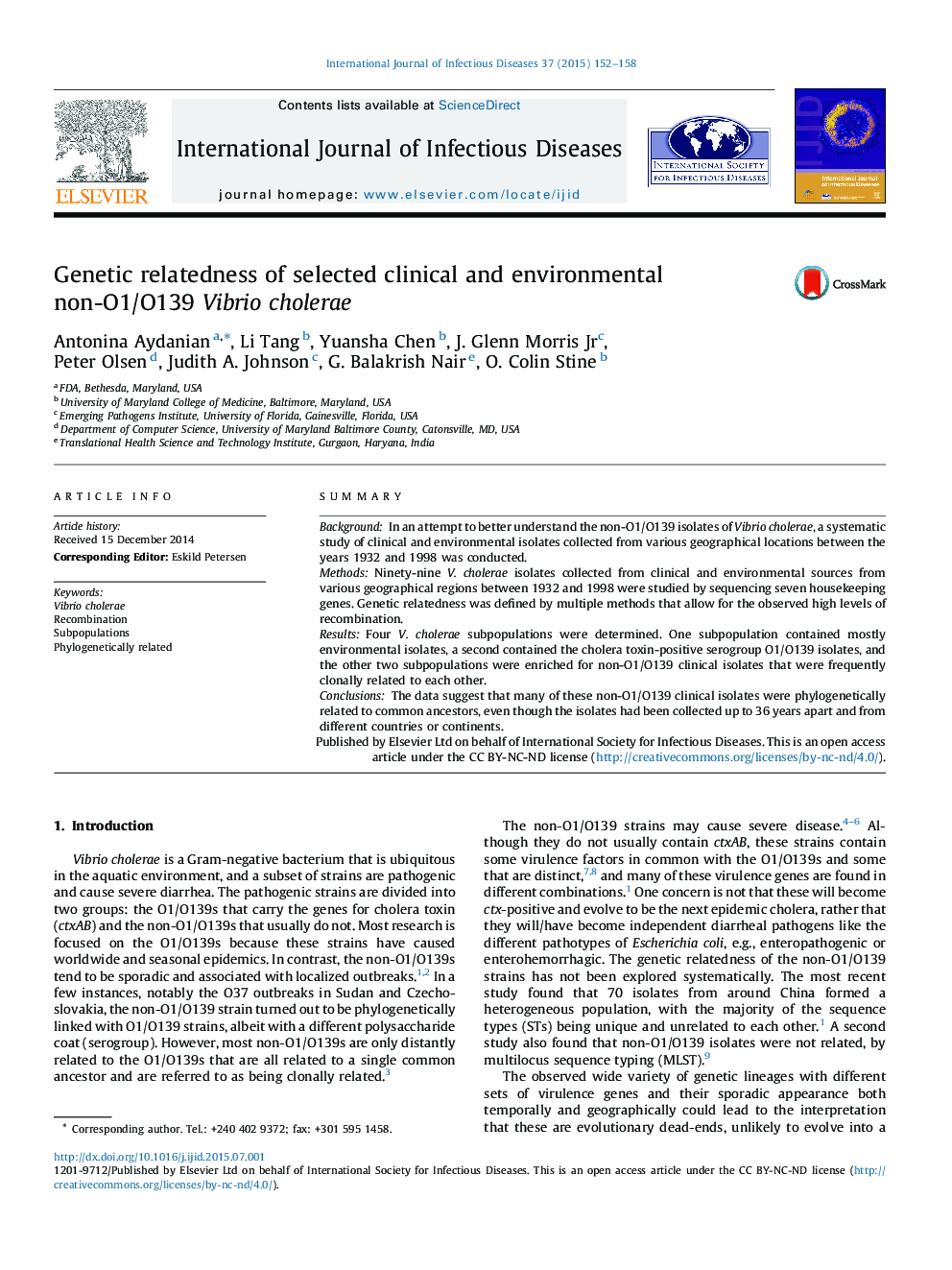| Article ID | Journal | Published Year | Pages | File Type |
|---|---|---|---|---|
| 3362119 | International Journal of Infectious Diseases | 2015 | 7 Pages |
•Four Vibrio cholerae subpopulations were identified.•One subpopulation contained mostly environmental isolates, a second contained the cholera toxin-positive serogroup O1/O139 isolates, and the other two subpopulations were enriched for non-O1/O139 clinical isolates that were frequently genetically very closely (i.e. clonally) related to each other.•Genetically closely related strains derived from a recent common ancestor were often isolated from patients with diarrhea, and were found in different years and in different countries, consistent with the ability of the non-O1/O139 clones to persist and spread across continents.
SummaryBackgroundIn an attempt to better understand the non-O1/O139 isolates of Vibrio cholerae, a systematic study of clinical and environmental isolates collected from various geographical locations between the years 1932 and 1998 was conducted.MethodsNinety-nine V. cholerae isolates collected from clinical and environmental sources from various geographical regions between 1932 and 1998 were studied by sequencing seven housekeeping genes. Genetic relatedness was defined by multiple methods that allow for the observed high levels of recombination.ResultsFour V. cholerae subpopulations were determined. One subpopulation contained mostly environmental isolates, a second contained the cholera toxin-positive serogroup O1/O139 isolates, and the other two subpopulations were enriched for non-O1/O139 clinical isolates that were frequently clonally related to each other.ConclusionsThe data suggest that many of these non-O1/O139 clinical isolates were phylogenetically related to common ancestors, even though the isolates had been collected up to 36 years apart and from different countries or continents.
Graphical abstractFigure optionsDownload full-size imageDownload high-quality image (297 K)Download as PowerPoint slide
